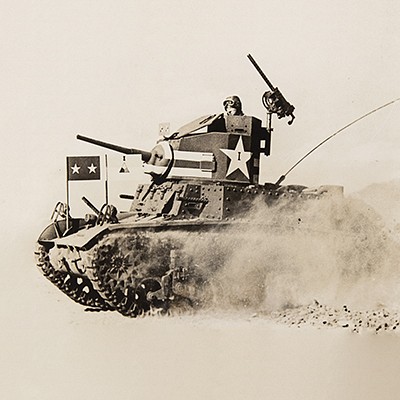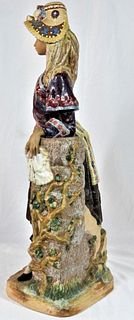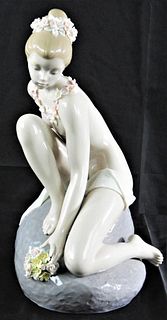British Pattern 1853 Rifle-Musket by Enfield Issued to Pvt. William P. McLaughlin, 126th IL Infantry at Vicksburg
Two ways to bid:
- Leave a max absentee bid and the platform will bid on your behalf up to your maximum bid during the live auction.
- Bid live during the auction and your bids will be submitted real-time to the auctioneer.
Bid Increments
| Price | Bid Increment |
|---|---|
| $0 | $5 |
| $50 | $10 |
| $200 | $25 |
| $500 | $50 |
About Auction
May 18, 2023
RR Auction support@rrauction.com
- Lot Description
British Pattern 1853 Rifle-Musket by Enfield issued to Pvt. William P. McLaughlin of the 126th Illinois Infantry at Vicksburg. This is a "TOWER / 1861" marked and dated rifle that has been bored out from the original .577 caliber to .62 caliber smoothbore. The metal has a mottled gray-brown patina throughout, with dark, plum-brown freckling throughout, as well as mild pitting around the percussion nipple and bolster. The walnut stock has numerous small handling marks and blemishes, as well as a large chip and crack on the edge of the barrel channel on the left side between the upper band and no longer present middle band, and a with-the-grain crack on the left side running up from the rear lock screw bolster. Additionally, there is a large bruise on the underside of the forend just ahead of the rear sight, as well as a small elongated, hexagonal inlet on the left side where a small plaque used to be affixed to the wood. What could be a purchasing agent’s view mark is present on the underside of the wrist, but it is illegible. The left side of the butt is carved: "W.P. Mc LAUGHLIN / Co. B 126 REG. ILL. / VOL. INFT. / DRAWEN AT / SEIGE OF VCKSBUR / JUNE 1863." The neat, Roman letters have also been filled with yellow paint at some point in order to make the writing more legible.
William P. McLaughlin was from Edgington, Illinois, and enlisted into the Union Army on August 11, 1862. On September 4, he mustered into Co. B, 126th IL Volunteer Infantry (a 3 year unit), and served in the regiment for the remainder of the war. The 126th IL was involved in the Siege of Vicksburg as part of the 2nd Brigade, Kimball’s Division, XVI Corp, and it was here that Pvt. McLaughlin was evidently issued this musket (the British P-53 Enfield was issued widely to troops on both sides during the course of the conflict). Following their service in Mississippi, the regiment was moved to Arkansas, where they remained until the end of the war. McLaughlin mustered out at Pine Bluff, Arkansas, on July 7, 1865. Also included with the musket are photocopies of McLaughlin’s muster rolls covering the term of his enlistment, as well as a large sheaf of copies of pension increase applications and affidavits for his widow, Christine McLaughlin, following his death in 1899. This is a great Civil War weapon with a connection to a particularly significant engagement. - Shipping Info
-
Bidder is liable for shipping and handling and providing accurate information as to shipping or delivery locations and arranging for such. RR Auction is unable to combine purchases from other auctions or affiliates into one package for shipping purposes. Lots won will be shipped in a commercially reasonable time after payment in good funds for the merchandise and the shipping fees are received or credit extended, except when third-party shipment occurs. Bidder agrees that service and handling charges related to shipping items which are not pre-paid may be charged to a credit card on file with RR Auction. Successful international Bidders shall provide written shipping instructions, including specified Customs declarations, to RR Auction for any lots to be delivered outside of the United States. NOTE: Declaration value shall be the item’(s) hammer price and RR Auction shall use the correct harmonized code for the lot. Domestic Bidders on lots designated for third-party shipment must designate the common carrier, accept risk of loss, and prepay shipping costs.
-
- Buyer's Premium



 EUR
EUR CAD
CAD AUD
AUD GBP
GBP MXN
MXN HKD
HKD CNY
CNY MYR
MYR SEK
SEK SGD
SGD CHF
CHF THB
THB
















